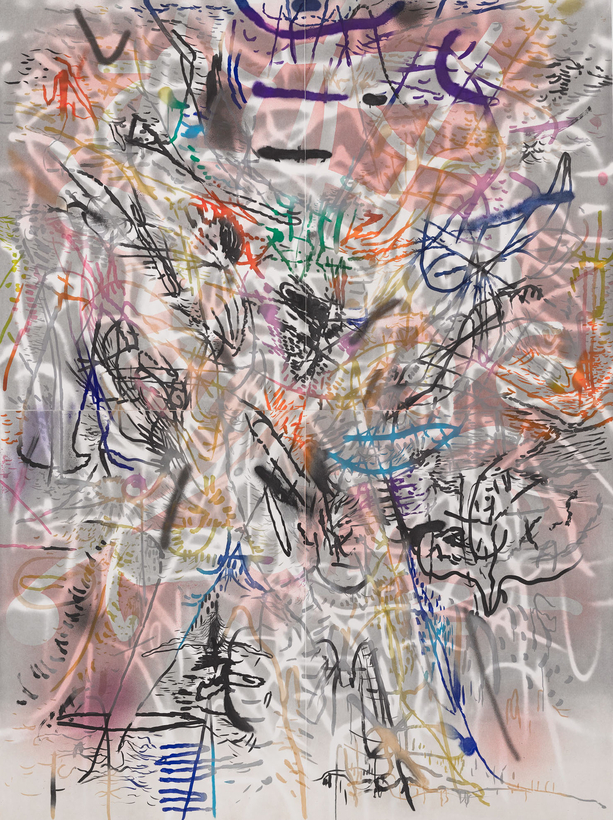The gray tones in Julie Mehretu’s paintings pack more of a punch than most artists’ entire palettes. They’re never idle or neutral; often they crackle with heat. Even when relegated to the background they seem like the raw material from which color is made. When Mehretu called a series of paintings “Grey Area,” the title didn’t suggest ambiguity so much as coiled potential.
Selections from “Grey Area” appear in “Julie Mehretu,” a mid-career survey at LACMA that reconfirms the artist as a rare talent. Mehretu is one of the few painters who can talk the big conceptual talk of systems and globalization without neglecting her craft. Ethiopia-born, Michigan-raised, and RISD-educated, she makes images that feel ambitious not simply for their size (although some are as big as a swimming pool) but also for their nuanced structure and dense, sedimentary layers. By 1997, the year she earned her master’s in fine arts, Mehretu already had an extensive tool kit of forms: whorls, arrows, licks of color. The pieces were there; the challenge was setting them in motion.
Mehretu is one of the few painters who can talk the big conceptual talk without neglecting her craft.
Sometime in the early 2000s, she achieved liftoff. The three-part “Stadia” series (2004) is a case in point: the paintings have the giddiness and gaudiness of a World Cup final, and there are echoes of Malevich’s Utopianism and Kandinsky’s exuberance. Where these 20th-century avant-gardists thought of themselves as purifiers of modern life, however, Mehretu seems more interested in re-complicating the world, showing the ways in which its parts don’t fit together, even when she’s acknowledging their jagged beauty.
In 2007, shortly after winning a MacArthur Fellowship, Mehretu accepted a commission for a mural in the lobby of Goldman Sachs in Lower Manhattan. By the time she’d finished, the economy was in pieces and her patrons were even more despised than they’d been when they hired her. “I don’t see [Goldman Sachs] as an evil institution,” Mehretu said, “but as part of the larger system we all participate in.” As public relations, this is pretty near perfect. As radical politics—and Mehretu, with her mentions of systems and her ready knowledge of post-colonial theory, has spoken the lingo of the radical left throughout her career—it’s so broad it starts to sound suspiciously like quietism. But maybe we should trust the painting, not the painter. Mehretu’s mural, like much of her work from the last 10 years, depicts a hurricane of colorful shapes swept into motion: a force as sinister and seductive as global finance itself. —Jackson Arn

